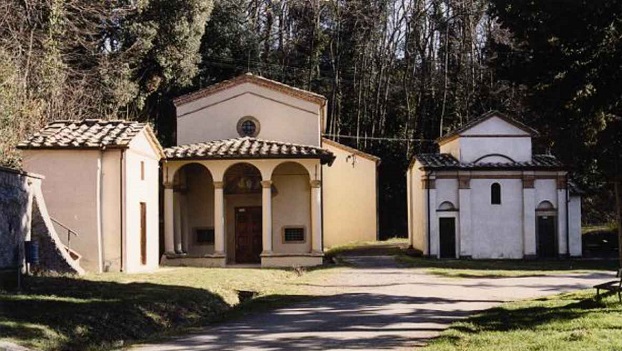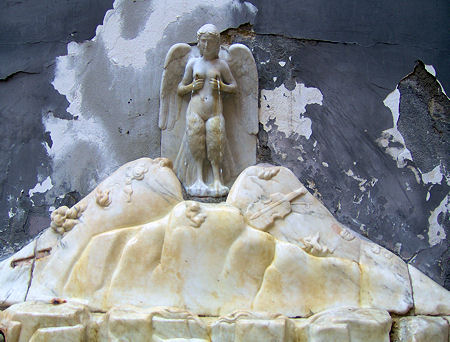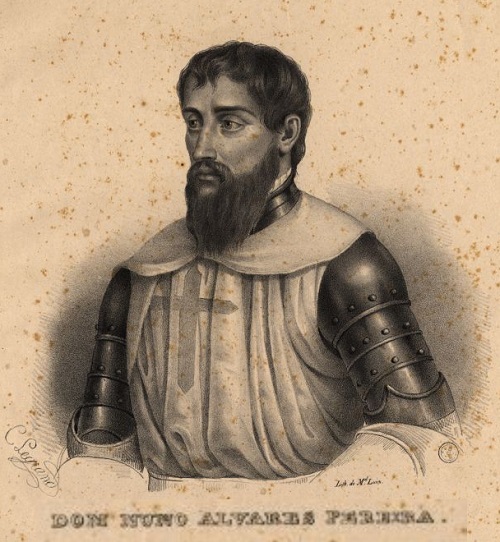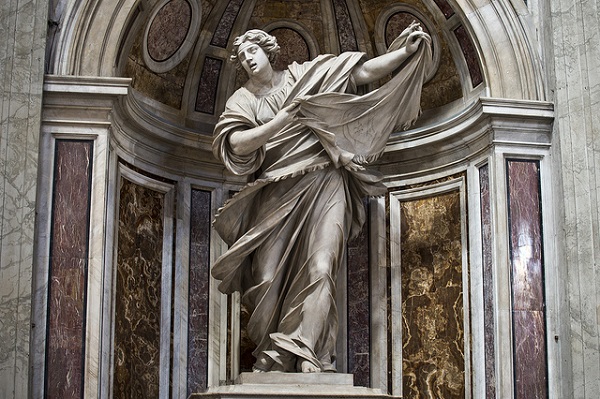The Sansevero chapel in Naples, built in 1590, was enlarged and embellished by Raimondo di Sangro in 1744 with an extensive collection of statues all dedicated to Mary, the mother of Jesus. Beyond the religious orthodoxy of the statuary, there are a series of symbols of the hermetic heterodoxy that characterised the esoteric thinking of di Sangro, one of the founders of Freemasonry in Naples and an avowed practitioner of alchemy.
On the left side of the chapel is the statue of Decoro (Decorum), a young man with a lion’s skin thrown over this shoulders in an allegory of Hercules, which symbolises Strength, intellectual Power. Opposite, Amor divino (Divine Love), holding up a flaming heart, symbolises the Power of the Spirit and the Heart that makes it possible to achieve Chemical Marriage and Divinity, here embodied by the Divine Mother, patron of alchemists. A little further along is Liberalita (Liberty); the coin (moneda) and compass represent the Monad, Spirit of Man and the circle of the action of the Divine Will where its presence in diffused.

On the opposite side is Educazione (Education), which transmits to the child, the neophyte, the elemental assumptions of hermetic Initiation – respect for freedom of thought and feelings of our fellow beings, with decorum and love in the service of Divine Wisdom symbolised by the Virgin. These principles are reinforced by the presence of other statues, those of Sincerita(Sincerity), Soavita del giogo coniugale (Sweetness of the Marital Yoke), Zela della religione(Religious Zeal) and Dominio di se stessi (Self-control). Whoever does not possess these qualities will inevitably fail the Initiation that the symbolism evokes.

Sincerity, a caduceus in his right hand and a heart in the left, represents spiritual intuition, the request for hermetic Illumination by the Initiate seeking to unite with the God within, in an act of absolute sincerity. Sweetness of the Marital Yoke, helmet on head and yoke in hand, indicates that gently but firmly, like a sacred warrior, he much gradually transform the life-energy into life-consciousness in the yoke of real life.
Religious Zeal carries a torch evoking acquired knowledge and the duty to preserve it, without adulterating it with foreign elements, while respecting the freedom of thought which conforms to free will in general. Self-control (of one’s baser tendencies) is the greatest and most sublime of battles that a man can fight, which is why this statue features a warrior holding a chained lion at his feet and an inverted torch, expressing the Love that emanates from the tamed beast (exterior and interior). This is the allegory of the triumph of Love and Wisdom over brute force, the ultimate transformation of the profane to the Initiate.
The abandonment of ordinary life for a spiritual existence is symbolised by the Disinganno (Disillusionment) statue, which represent a man releasing himself from the mesh of a net with the help of a winged genie, allegory of the divine Spirit. This is represented below the statue by a bas-relief of Christ giving sight to the blind, transmitting the Light of Truth to those who live int he darkness of ignorance, the greatest blindness of all.
Finally, Pudicizia (Modesty) brings together all initiatory Wisdom, whose Light is sought by the neophyte wishing to become an Enlightened One.











